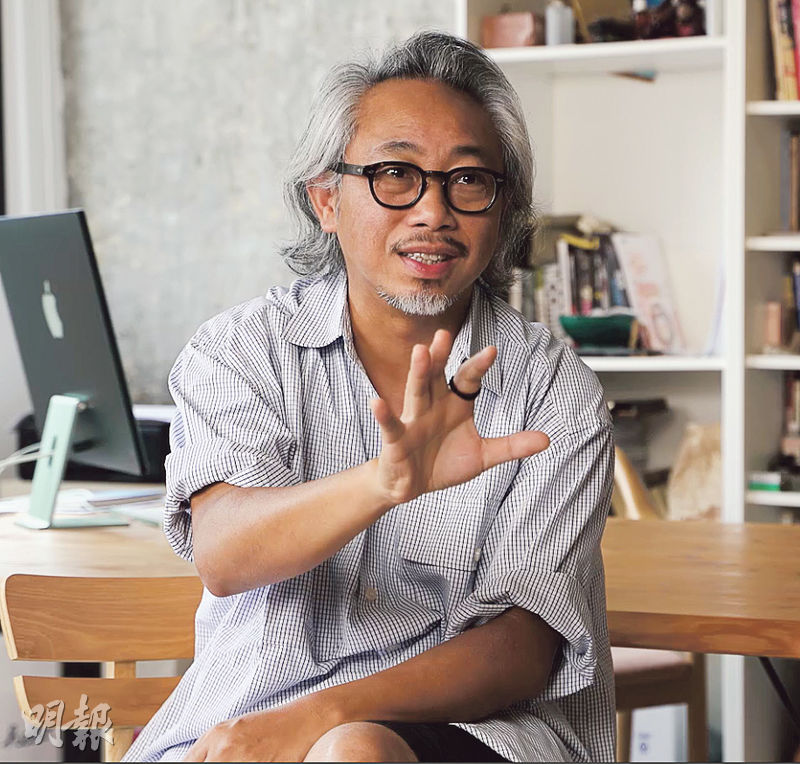 |
| Mak Kwok Keung wants to express another type of vitality of the Walled City, where people were optimistic about their environment and live happy lives in their hearts |
 |
| The movie sets have been dismantled but not yet discarded, and there is a chance that they will be back for the public and tourists to check out |
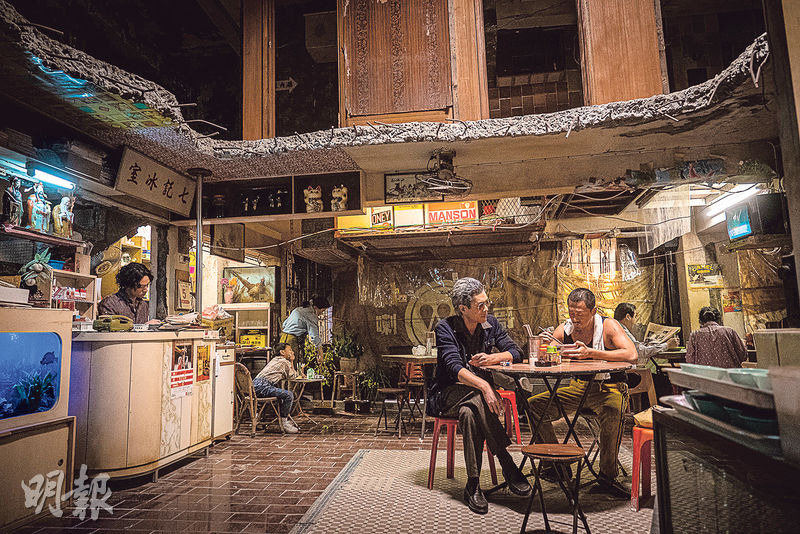 |
| The tea stall is an important set of TWILIGHT, and Mak Kwok Keung uses warm colors like beige, brown and orange to create a warm and comfortable environment. |
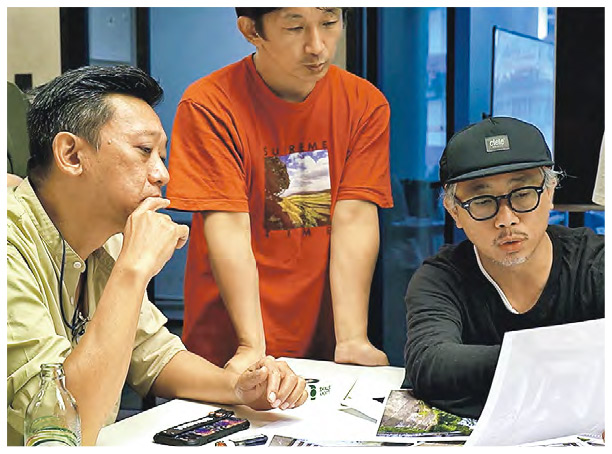 |
| Director Soi Cheang and Mak Kwok Keung study the art style of each scene |
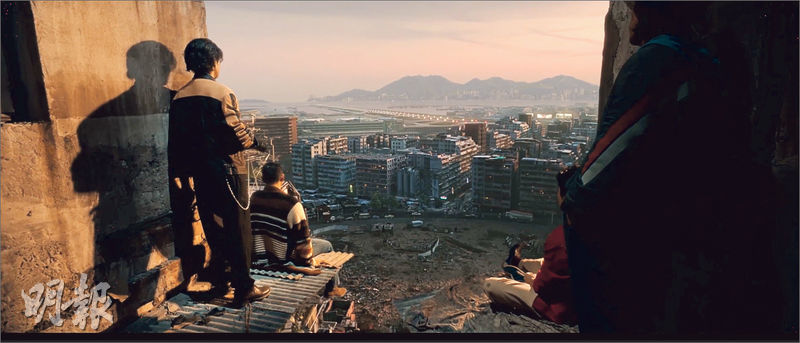 |
| For the twilight scene at the end of the movie, Mak Kwok Keung hopes that the audience would feel the light and life is still has hope |
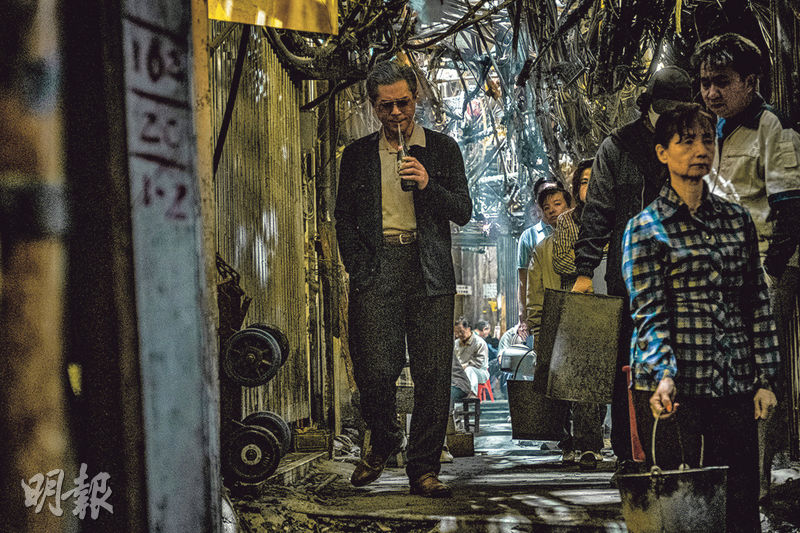 |
| Mak Kwok Keung uses intricate water pipes, electrical wiring and other elements of the Walled City to weave together a special visual effect |
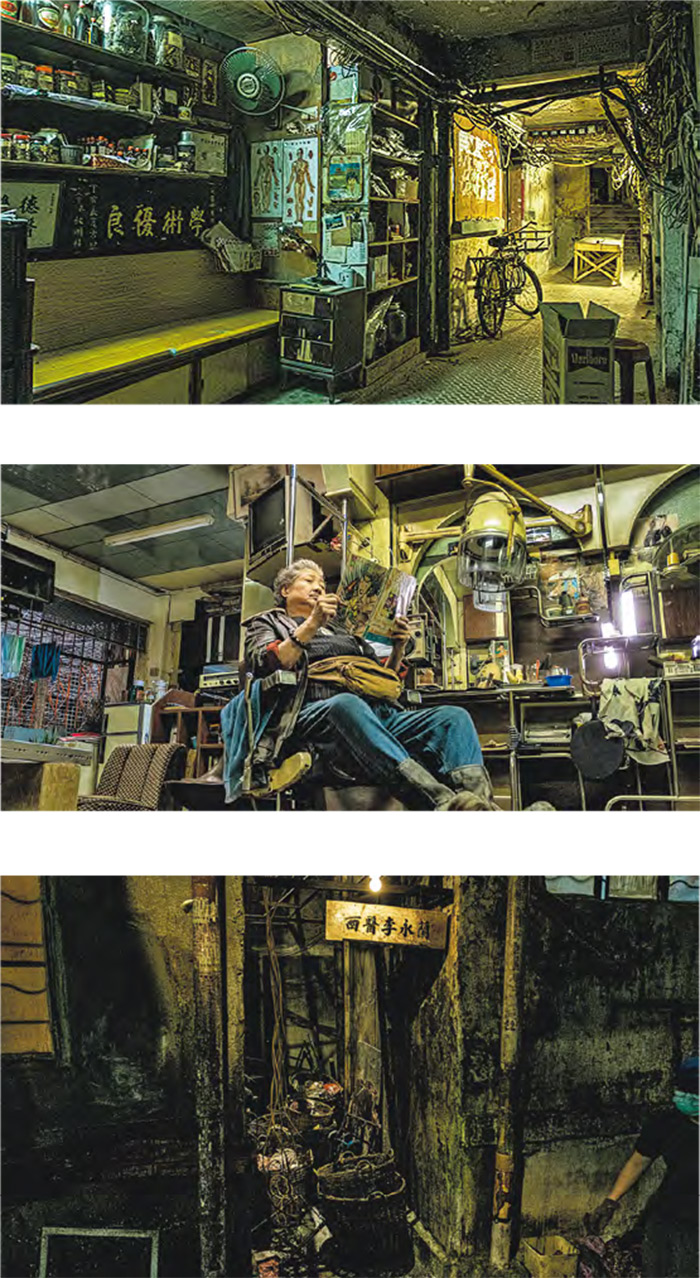 |
| Based on old photographs and information, Ma Kwok Keung reconstructs the store, the barber shop and the narrow side streets and alleys of the Kowloon Walled City courtesy of mingpao.com |
The film TWILIGHT OF THE WARRIORS: WALLED IN (GAU LUNG SING JAI JI WAI SING) has been a critical and commercial success. As of yesterday, its box office in Hong Kong and Macao has collected more than HK$ 70 million and placed it fourth in the total box office of Chinese films in Hong Kong film history. It also made nearly 600 million yuan RMB in the mainland. The film spent HK$ 50 million to bring back the appearance of the Kowloon Walled City from the past, the realistic sets and props of which evoked memories of the previous generation audiences, and also attracting the curiosity of the new generation audiences about the Kowloon Walled City. They all hope to keep the movie sets for visiting. Louis Koo Tin Lok once said that he looked forward to it becoming a tourist landmark and motivate the Hong Kong tourism industry. The Government also mentioned at a press conference on the chronology of major events in Hong Kong a few days ago that it has learned that the movie sets have been dismantled not yet discarded. It was discussing with relevant parties to see if some of the sets can be taken out for members of the public and tourists to check out. As the sets in the film reverberated with great resonance, and art director Mak Kwok Keung and the team should be credited. He explained the entire concept and the difficulties encounters during the construction.
Art director Mak Kwok Keung in the past has won the Hong Kong Film Award for Best Art Direction Born with LIMBO (JI CHI) and BODYGUARDS AND ASSASSINS (SUP YUET WAI SING). Born and raised in Hong Kong, he grew up in a dense mix of old and new buildings. He has an intimate and ordinary impression of the Kowloon Walled City, which also had a sense of mystery that kept him at a distance out of respect. In the past he has always chosen to take a detour around it, never truly stepping foot in the Walled city even when it demolished. He described the Kowloon Walled City in the 1980s as a huge installation, reflecting part of the state and history of society at that time through the living environment established between people, the orderly out of chaos buildings, the winding staircases and the intricate plumbing and electrical wiring.
When preparing to shoot TWILIGHT OF THE WARRIORS: WALLED CITY, Mak Kwok Keung said that the art style was a little difficult to define at first. When he received the script, he knew that it was an adaptation of the novel; but with building some styles from the comics, he had to be careful, "The Kowloon Walled City was a witness of more than 100 years of history, blending modern Hong Kong culture and social changes. We could neither be too farfetched nor too realistic, but with director Cheang Pou Soi we decided the final style -- realistic with some comic book style. We created a Walled City that looked fearsome from the outside with a sense of mystery; a place that gave people an impression that you could not causally enter, but was full of life inside; the harmony of life could be experienced in the mixed environment, and the residents helped each other in the warm Walled City."
The art team did a lot of research before the production, and contacted neighbors who have lived in the Walled City. The most important was how to use previous photos and information to find out their living conditions at that time, focusing on the details of life, finding out the love between people in the city instead of focusing on sex, gambling and drugs, and having a deeper understanding of the world in the Walled City. "Ordinary people's impression of the Walled City was a lawless place, we don't want to look at the Walled City from this angle. In the Walled City since the 1970s, in less than 10 years, the population has tripled from 10,000 people. There were many rich stories behind it that were worth discovering. Getting to this Hong Kong with its economy taking off in the 1980s, the Walled Cty that was full of life within darkness, we wanted to express another type of vitality, a type of hope. Residents of the Walled City during that era, no matter how poor their living conditions were, each person was able to find their own way to survive in hardship, optimistically faced the environment and lived out the paradise in their hearts."
Mak Kwok Keung felt that first they had to create a Kowloon Walled City that would be credible to everyone and for the audience to be able to relate to, only then would the story be able to continue to be told. "Since books, online information and pictures are only a small part of the Walled City, there are still many places that have not been seen; we had to recreate several of the most common and impressive locations in the Walled City, so that the audience would recognize them at a glance, such as the faucet, the store at the entrance of the north gate, etc. Once the audience believed that this Kowloon Walled City existed, we would be able to create more interesting places to match the development of the story and hope that the audience would be the first to explore other spaces in the Kowloon Walled City that have never been seen before, such as the narrow alleys that were full of wires and water pipes that Chan Lok Kwan (played by Raymond Lam Fung) shuttling back and forth through. I also used these intricate water pipes and wires to interweave special visual effects to enhance the steampunk style." He pointed out that another key design concept was to penetrate the inner and outer walls of the building, as well as between the ground floors. Many broken walls and holes were frequently seen in the movie. This design was from the background research of the characters, as well as the consideration of the production functions. In the film Tornado (played by Koo Tin Lok) and others kept an eye out in the walled city to prevent the invasion of external forces. They knew the geographical environment of the Walled City, the intertwined structure of the building like the back of their hands. They opened up some of the inner and outer walls of the building, convenient to flexibly shuttle between the buildings and slits and establish a unique route system, so they would be able to get to anywhere in the Walled City in the shortest distance and time. There was a scene where Shun Yat (played by Terrance Lau Chun Him) used this special route to chase and intercept Lok Kwan who mistakenly stumbled into the walled city.
Mak Kwok Keung said: "We studied through research the real living condition of the Walled City, there were all kinds of shops, the smoke filled food processing plant, the noise of the hardware industry, etc. I used different light blue and light green as the main colors to create a rough world of steampunk, and then add a light yellow background color, hoping to bring out the gentleness of life. I wanted the audience to get closer to reality, to see the world in first person, hoping to get a vibrant, enthusiastic atmosphere." He also added different colors according to the needs of individual plots. For example the tea stall was an important main location, using warm colors such as beige, brown, and orange to create a warm, comfortable and humane environment. Everyone had barbecued pork rice after working hard, and residents watched TV together. It was a place for simple joy, and it was also the first time Lok Kwan sat down to eat barbecued pork rice and felt the warmth of human contact. A stairway away across was the temporary habitat of Lok Kwan, with dark green pine and deep lake blue as the main colors, matching the cold loneliness of Lok Kwan sleeping alone on a nylon bed in the dark night; with contrasting tones expressing Lok Kwan's unstable emotions, "The whole setting inside the Walled City were filled with the daily lives of the residents, the color was a little richer, without focusing too the side of the foundation. at the end of the movie, I kept the colors brighter for the twilight panorama of the Kowloon Walled City, hoping to feel that there was light even at dusk, and life could be full of opportunities at any time."
Mak Kwok Keung has conceived the design of the entire Kowloon Walled City a year before the start of filming, but due to the epidemic it was stopped for half a year. He only had 4 months to prepare when it started up again, but most of the sets had concepts and the design part went smoothly. The texture effect processing was often longer than the scenery construction time, if he constructed according to the construction drawings the set would be too orderly. He pointed and waved with the construction team everyday on the set, climbed up and down, with the roughest and most primitive methods they threw the set together, as long as the changes were good they would be more valuable, even at the last minute, he would do his best to coordinate. "The earliest set was the gambling parlor. The set was already half built and the furniture were also mostly ready. Finally it was changed into a tea stall, which was very accurate and valuable; because if the gambling parlor was retained, the result wouldn't have been this at all, everyone will understand after watching the film."
Mak Kwok Keung said that the biggest difficulty was the lack of time, "At that time, I often hoped to have 48 hours a day; and the other difficulty was how to give this walled city a real sense of life. I try to use various methods to restore the Kowloon Walled City in the 1980s, because there are a large number of data pictures and videos. Many people have studied the Walled City, so more realism was required; we constantly studied all kinds of details, brick by brick, topography and the flavor and traces of residents' lives, and find a large number of old things, old wood and materials, etc., to help render the Walled City as if we became cultural relics archaeologists. The requirements for everything were different, but we didn't even have a single piece of wood from the original Walled City; how can we restore it? Since the one and only Kowloon Walled City in the world has disappeared, I adjusted my thinking. Actually I wanted to recreate a Kowloon Walled City that was born for the movie, that was how we completed today's finished product. I believed that the design and the completion level have met the commercial needs and satisfied the function of the picture. The whole production process was full of excitement and satisfaction, leaving a lot of memories." He was satisfied with each scene but seems to have some regrets. What made him grateful and proud was that he worked hard day and night with a group of very excellent colleagues in the art department with 200% dedication and contribution to achieve these wonderful scenes together.
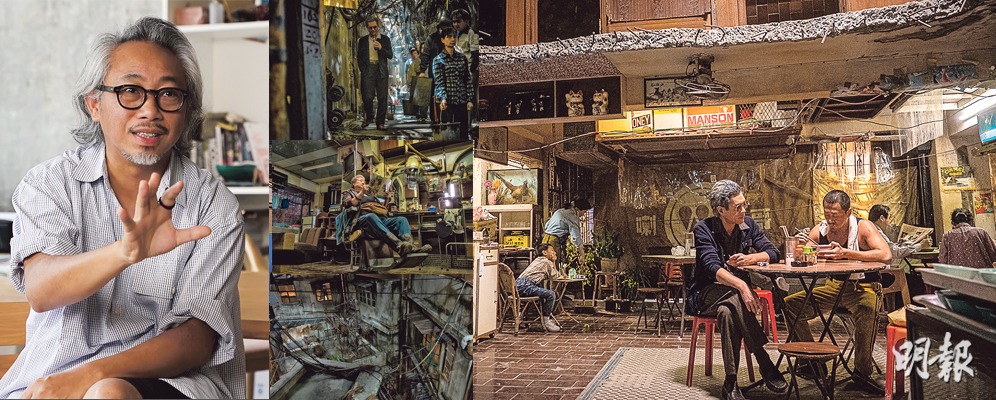



Big Congrats to Kwok-Keung Mak and the makres of Twilight of the Warriors: Walled in. this movie, and especially the wonderful colorful detailed Set design just blew me away. i would love to get something like a Foto Book of the set design or just any kind of more infos about this great movie. Much love and Big respect. N.B / Vienna / Austria
ReplyDeleteNot sure if it is a photo book and it is sold out anyway, but apparently there was a book?
ReplyDeletehttps://www.yesasia.com/us/twilight-of-the-warriors-walled-in-the-art-of-cinematic-set-constructions/1131765863-0-0-0-en/info.html